#marie thérèse :(((
Text


18 notes
·
View notes
Text

Marie Antoinette with her children Louis Joseph, Dauphin of France (22 October 1781 – 4 June 1789), and Marie Thérèse Charlotte, Madame Royale (19 December 1778 – 19 October 1851).
Portrait by Charles Le Clercq, 1781.
—
Marie Antoinette (Marie Antoinette Josèphe Jeanne; 2 November 1755 – 16 October 1793) was the last queen of France before the French Revolution.
She was born an archduchess of Austria. She was the penultimate child and youngest daughter of Empress Maria Theresa and Emperor Francis I.
She became Dauphine of France in May 1770 at age 14 upon her marriage to Louis-Auguste, heir apparent to the French throne.
On 10 May 1774, her husband ascended the throne as Louis XVI and she became queen.
#Marie Antoinette#Louis-Auguste#King Louis XVI#Louis Joseph the Dauphin#Marie Thérèse#House of Habsburg-Lorraine#House of Bourbon#French Revolution
22 notes
·
View notes
Text
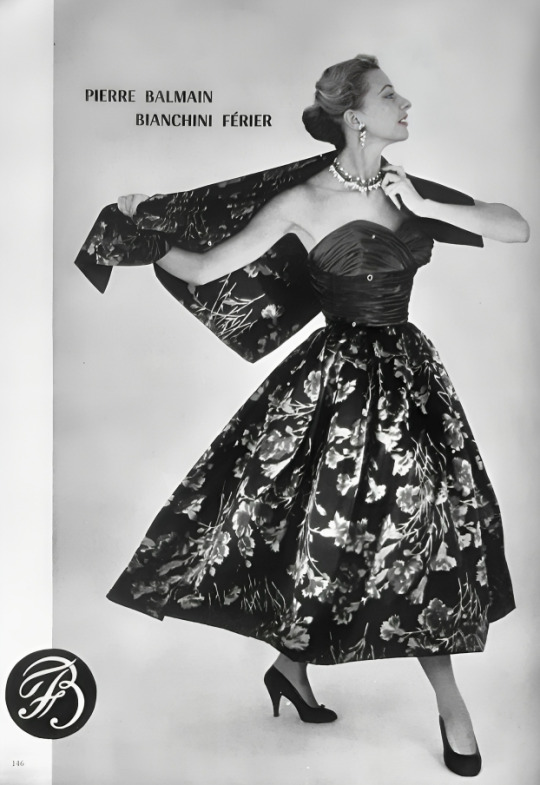
Pierre Balmain Haute Couture Collection Fall/Winter 1954-55 “jolie Madame de France"
Marie-Thérèse wears a dress with a bodice in Chinese blue satin and a satin skirt printed with large carnations in blue tones with green foliage on a black background (Bianchini Férier), draped belt in black satin, reversible shawl in the same printed satin lined with black satin.
Pierre Balmain Collection Haute Couture Automne/Hiver 1954-55 "jolie Madame de France"
Marie-thérèse porte une robe à corsage en satin bleu de Chine et jupe en satin imprimé de grands oeillets dans des tons bleus à feuillages verts sur fond noir (Bianchini Férier), ceinture drapée en satin noir, châle réversible en même satin imprimé doublé de satin noir.
Photo Philippe Pottier
#haute couture#pierre balmain#fashion 50s#french designer#french style#fall/winter#automne/hiver#marie thérèse#philippe pottier#bianchini férier#cocktail dress#robe de cocktail#satin#printed#jolie madame de france
10 notes
·
View notes
Text
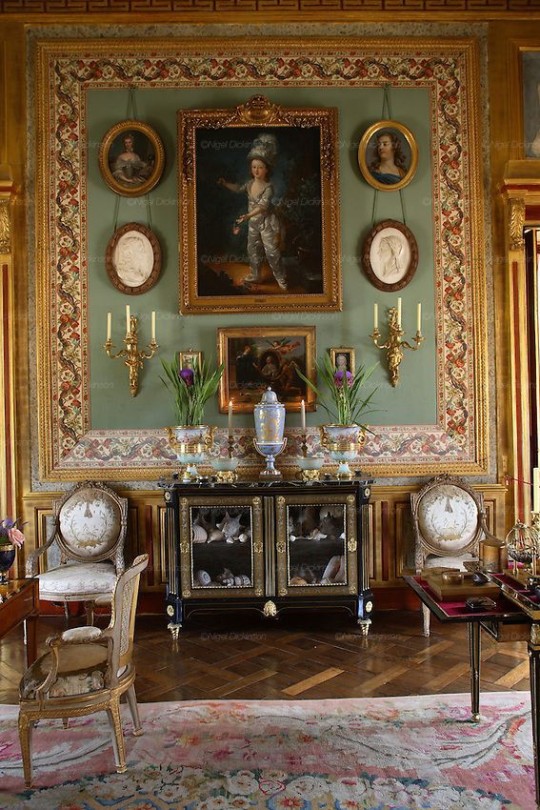
༄Sala de estar, en "Le Château du Champ de la Bataille"
༄El Castillo de "Champ de Bataille" fue construido en el siglo XVII por el Conde Alexandre de Créqui-Bernieulles. Este castillo está situado en la localidad de Sainte-Opportune-du-Bosc, a escasos kilómetros de Neubourg, en la Alta Normandía, en Francia. Desde 1992 pertenece al diseñador Jacques García, que lo ha restaurado y remodelado, para lograr que el aspecto del castillo se asemejara al que tenía en el siglo XVII.
#france#francia#normandía#17th century#château#campo de batalla#marie thérèse#luis xiv#elegance#elegant style#aristocracy#french aristocracy#luxurydecor#luxury
37 notes
·
View notes
Text







Women in History Month (insp) | Week 4: Dynastic Daughters
#historyedit#perioddramaedit#women in history#women in history month challenge#my edits#mine#marie anne de bourbon-conti#princess hexiao#hanzade sultan#caroline bonaparte#marie-thérèse-charlotte de france#princess fukang#gorgô of sparta#french history#chinese history#ancient greece#17th century#18th century#19th century#11th century#6th century bc#5th century bc
185 notes
·
View notes
Text
yesterday i was humming sharlayan's theme and my 78 years old neighbour heard me and said "oh it's so nice, what is it?" so i played it on my phone. Except she wanted to see the screen so she saw the youtube video i'd put on and she was silent for a sec and said
"why is there a walking cat man"
112 notes
·
View notes
Text
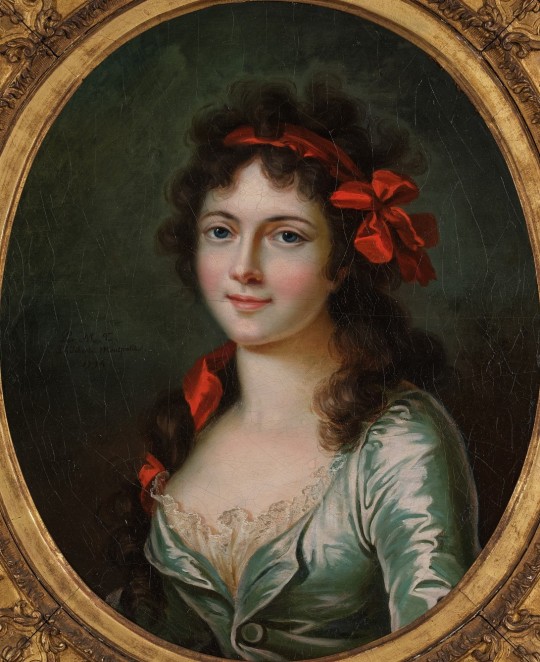
Marie Thérèse Vincent de Montpetit (French, 1774-1837): Portrait of Mademoiselle Lange (1794) (via Sotheby's)
#Marie Thérèse Vincent de Montpetit#Marie Therese Vincent de Montpetit#women artists#women painters#art#painting#eighteenth century#portrait#clothes#french painters
180 notes
·
View notes
Note
Hello :)
I would like to know if you know who is behind the horrible false accusation against Marie Antoinette regarding her son. We know that Hébert presented the testimony in the revolutionary tribunal, and although he bears responsibility for it, I don't think he was alone in fabricating this false testimony.
While it is hard to know for sure exactly whose idea it was to make incest a charge against Marie-Antoinette, these are all the people involved in obtaining the information needed that I’ve been able to track:
When giving his testimony during Marie-Antoinette’s trial, Hébert claimed this ”fact” had been discovered by Antoine Simon, Louis-Charles’ caretaker in the Temple, who then told him, alongside mayor of Paris Jean-Nicolas Pache and prosecutor of the Paris Commune Pierre-Gaspard Chaumette, about it (cited in Histoire parlementaire de la Révolution française, volume 29, page 355-356):
…He (Hébert) adds that Simon having informed him that he had something important to communicate to him, he went to the Temple accompanied by the mayor and the prosecutor of the Commune. There they received a declaration from the young Capet, from which it was revealed that at the time of Louis Capet's flight to Varennes, La Fayette was one of those who had contributed the most to facilitating it; that for this purpose they had spent the night at the castle; that during their stay at the Temple, the inmates had continued for a long time to be informed of what was happening outside; that correspondence was sent to them in clothes and shoes. The little Capet named thirteen people as those who had partly cooperated in maintaining these intelligences, that one of them having locked him and his sister in a turret, he heard him telling his mother: I will get you the means of finding out the news by everyday sending a peddler to shout the evening newspaper nearby. Finally, young Capet, whose physical constitution each day was deteriorating, was discovered by Simon [while engaging] in indecent pollutions that were fatal to his temperament; that the latter having asked him who had taught him this criminal practice, he replied that it was to his mother and his aunt that he was indebted for the knowledge of this fatal habit. From the declaration, observes the deponent, that the young Capet made, in the presence of the mayor of Paris and the prosecutor of the Commune, it follows that these two women often made him sleep between the two of them, that he there committed acts of the most unbridled debauchery; that there was not even any doubt, from what fils Capet said, that there had been an incestuous act between mother and son. There is reason to believe that this criminal enjoyment was not dictated by pleasure, but rather by the political hope of annoying the physique of this child, who one still liked to believe was destined to occupy a throne, and whose morale one wanted by this maneuver to ensure the right to reign over while, by the efforts that one made him make, he remained attacked by a descent, for which it was necessary to put a bandage on this child; and ever since he no longer lives with his mother he has regained a robust and vigorous temperament.
The letter where Simon asks Hébert to come over to the Temple has been conserved and can be found cited in volume 1 of Histoire du tribunal révolutionnaire de Paris : avec le journal de ses actes (1880) by Henri Wallon:
The republican Simon to the patriot and damn patriotic Father Duchesne,
The Temple, 30 September 1793, year II of the Republic one and indivisible
Hello. Come quickly, my friend, I have things to tell you and would feel a lot of pleasure seeing you. Try to come today, you will always find in me a frank and brave republican.
Louis-Charles’ declaration, made on October 6 1793, can in its turn be found cited in Procès des Bourbons (1798). Besides Louis, Simon, Pache, Chaumette and Hébert, the document has been signed by Frery and Seguy, commissioners of the temple, Heousée, police administrator, and Laurant, council commissioner. According to The Dauphin (Louis XVII) (1921) by G. Lenotre, Louis-Charles’ signature is very clumsily written when compared to the handwriting in his schoolbooks, opening the door to the possibility his interrogators had threatened him or made him drunk in order to get him to put his name on the paper:
…He declared to them, furthermore, that having been surprised several times in his bed by Simon and his wife, charged with watching over him by the commune, committing indecency on himself that was harmful to his health, he admitted to them that he had been instructed in these very pernicious habits by his mother and his aunt, and that different times they had amused themselves by seeing him repeat the practices in front of them, and that very often this took place when they made him lie down between them. From the way the child explained himself, he made us understand that once his mother made him approach her; it resulted in copulation and a swelling in one of his testicles, as said by the citoyenne Simon, for which he wears a bandage, and that his mother recommended him to never speak of it: that this act had been repeated several times since.
In the same work we also find the interrogation held with Louis’ sister Marie-Thérèse-Charlotte the following day. She was then among other things asked ”if, when playing with her brother, he did not touch her where he didn’t get to touch her; if one didn’t make her brother jump on a blanket, and if his mother and aunt hadn’t made him sleep between them?” Thérèse responded with a no. The protocol then documents the following:
We immediately called for Charles Capet, and invited him to tell us if what he said yesterday, regarding the touching of his person, was true?
[He] persisted in what he had said, repeated and maintained it in front of his sister, and persisted in saying that it was the truth. Asked a second time to state whether this was indeed true, he replied yes, it is true; his sister claimed to never have seen it.
This document is signed by Jacques-Louis David, Pache, Chaumette, Heussé, Laurent and Danjou. The same people plus one Séguy also signed the interrogation of Madame Élisabeth held the very same day. The childrens’ aunt was she too questioned about the incest:
Has she read Charles' statement, regarding the indecencies mentioned in the document, dated the 15th of this month?
Responded that a similar infamy is too far below and too far away from her to be able to respond to it; that moreover the child had had this habit for a long time; and that he must remember that she and his mother scolded him for it several times.
Charles was asked to explain on this subject: he attested that he had told the truth.
She read the rest of Charles' statement on the same subject, in which he persisted, adding that he did not remember the times, but that it happened frequently.
She said that as it only concerns her, she will not respond to it any more than to the rest; she believes that her conduct must protect her from suspicion.
Charles asked to declare who had first instructed him in this practice.
The two together.
Did it happen during the day or during the night?
He doesn’t remember, but he thinks it was in the morning.
The secretary who wrote the interrogations down was one Daujon. His colleague, the municipal officer Goret, wrote that he had told him the following about the incident (cited in The last days of Marie-Antoinette (1907) by G. Lenotre):
It was this same Daujon who was acting as secretary when the young prince was subjected, in the Temple, to an examination on the subject of the slanderous and infamous statements that had been circulated with in regards to the Queen. Here, word for word, is what Daujon told me on the subject of that examination, and I may say that I considered him a man worthy of belief. The young prince, he told me, was seated in an armchair, swinging his little legs; for his feet did not reach the ground. He was examined as to the statements in question, and was asked if they were true: he answered in the affirmative. Instantly Madame Elizabeth, who was present, cried out: ”Oh, the monster!” As for me, added Daujon, I could not regard this answer as coming from the child himself, for his air of uneasiness and his general bearing inclined me to believe that it was a suggestion emanating from someone else, — the effect of his fear of punishment or ill treatment, with which he may have been threatened if he failed to comply. I fancy that Madame Elizabeth cannot really have been deceived either, but that her surprise at the child's answer wrung that exclamation from her.
#french revolution#frev#hébert#marie-antoinette#louis xvii#jacques louis david#ask#the fact this was the last time thérèse and élisabeth ever saw louis is so damn dark 💀💀
35 notes
·
View notes
Text

Four months before the revolution of 1830, on March 29, King Ferdinand of Spain abolished Salic law in favor of his daughter, Isabella, to the prejudice of his younger brother, Charles. When the French Bourbons were told of the news, Marie-Thérèse grumbled that France should have done the same thing long ago.
Marie Thérèse, The Fate of Marie Antoinette’s Daughter by Susan Nagel
33 notes
·
View notes
Text

Marie Antoinette and her Children, Élisabeth Vigée Le Brun. 1787.
#aesthetic#art#art history#fashion#historical fashion#historical art#women in art#marie antoinette#marie antoinette aesthetic#Maria Antonia of Austria#Marie Thérèse of France#Louis XVII#French royals#bourbon royals#18th century#18th century aesthetic#1700s#1700s fashion#1700s art#France#French fashion#French history#1700s dress#1700s gowns#royal fashion
67 notes
·
View notes
Text

An 11 year old Louise Marie Thérèse d'Artois, future Duchess of Parma.
#Louise Marie Thérèse d'Artois#louise marie therese d'artois#french monarchy#french royal family#house of bourbon#long live the queue
36 notes
·
View notes
Text

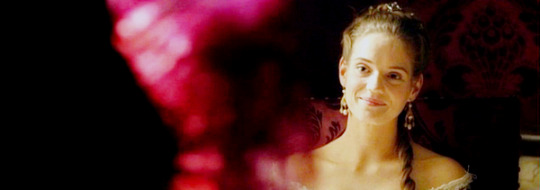





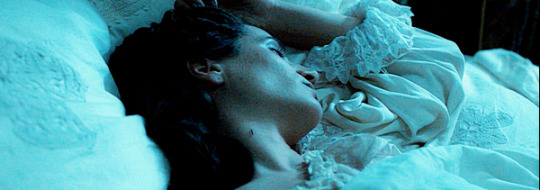


@perioddramasource: PERIOD DRAMA APPRECIATION WEEK
Day Two: Favourite Period Drama TV - Versailles (created by Simon Mirren and David Wolstencroft)
#versailles tv#versaillesedit#perioddramaedit#perioddramaweek2023#noemie schmidt#george blagden#alexander vlahos#evan williams#anna brewster#elisa lasowalski#jessica clark#frances pooley#catherine walker#my edits#heniette d'angleterre#louis xvi#phillipe d'orléans#chevalier de lorraine#madame de montespan#marie thérèse#liselotte von der pfalz#marie louise#madam de maintenon
162 notes
·
View notes
Photo
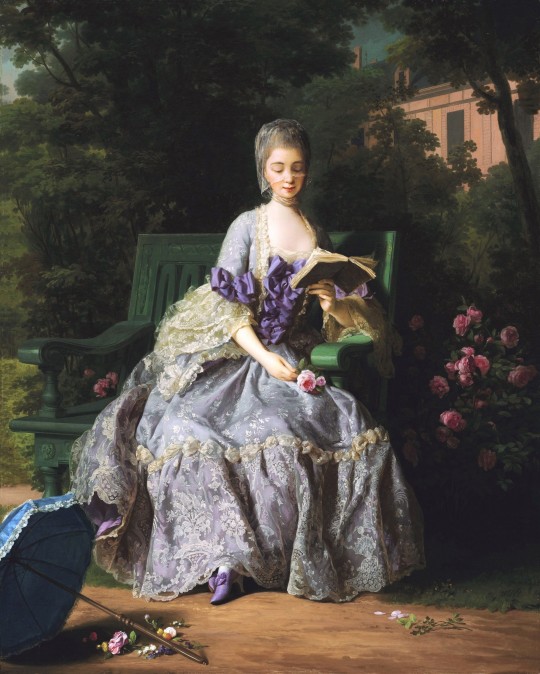
Jean-Baptiste Charpentier the Elder (1728-1806, French) ~ Portrait of Marie Thérèse Louise of Savoy, Princesse de Lamballe (1749-1792), seated full-length, in a lilac dress, n/d
[Source: Christie’s]
#jean-baptiste charpentier the elder#french art#marie thérèse louise of savoy#portrait of a lady#woman reading#woman with roses#purple shoes#gorgeous dress#the lace
336 notes
·
View notes
Text

Christian Dior Spring/Summer 1953 Haute Couture Collection. Marie-Thérèse wears the "Oxford" striped suit. Photo Philippe Pottier.
Christian Dior Collection Haute Couture Printemps/Été 1953. Marie-Thérèse porte le tailleur à rayures "Oxford". Photo Philippe Pottier.
Ligne Tulipe
#christian dior#collection haute couture#french designer#french style#fashion 50s#1952#spring/summer#printemps/été#ligne tulipe#marie thérèse#philippe pottier#oxford#sriped suit
18 notes
·
View notes
Text
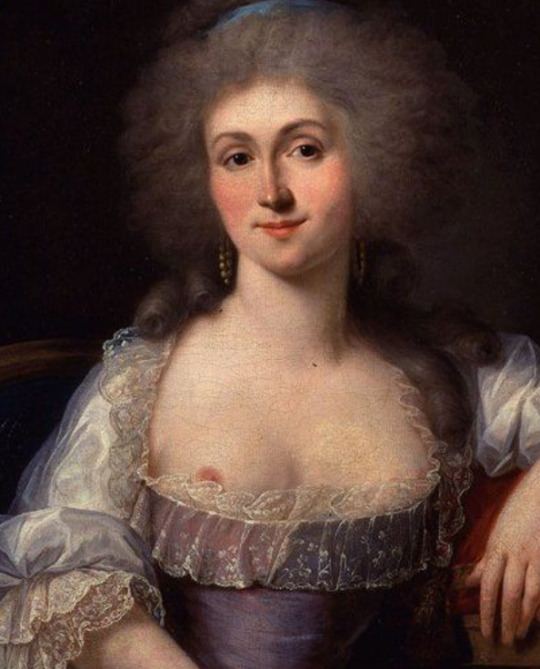
Portrait of Marie Thérèse (c. 1775) by Joseph Duplessis
Marie Thérèse Louise of Savoy, Princesse de Lamballe, was a confidante of Queen Marie Antoinette. As one of Marie Antoinette's favorites and as the Superintendent of the Queen's Household, she held significant influence at court.
Maria Thérèse was described as proud and sensitive. Despite her ability to amuse the queen, she was introverted and often preferred solitary moments with Marie Antoinette over participating in high society. She struggled with health issues, experiencing "nerves, convulsions, fainting-fits," and reportedly could faint, remaining unconscious for hours.
She remained loyal to Marie Antoinette during the French Revolution, even though it ultimately cost her head. Maria Thérèse was killed and beheaded by the crowd during the September Massacre in 1792.
(more info)
#Marie Thérèse Louise of Savoy#Princesse de Lamballe#French Revolution#Joseph Duplessis#portrait#art#painting#Miss Cromwell#Marie Antoinette#why did he paint her like that#I don't get it
43 notes
·
View notes
Text

Oil Painting, 1787, French.
By Élisabeth Vigée Le Brun.
Portraying Marie Antoinette in a red velvet dress with black fur trim, with her children.
Château de Versailles.
#élisabeth vigée le brun#marie antoinette#marie Thérèse de France#Louis Charles de France#womenswear#1780s womenswear#1787#1780s#1780s painting#1780s France#red#louis Joseph of France#dress#1780s dress#royalty#ancien regime#château de versailles
80 notes
·
View notes